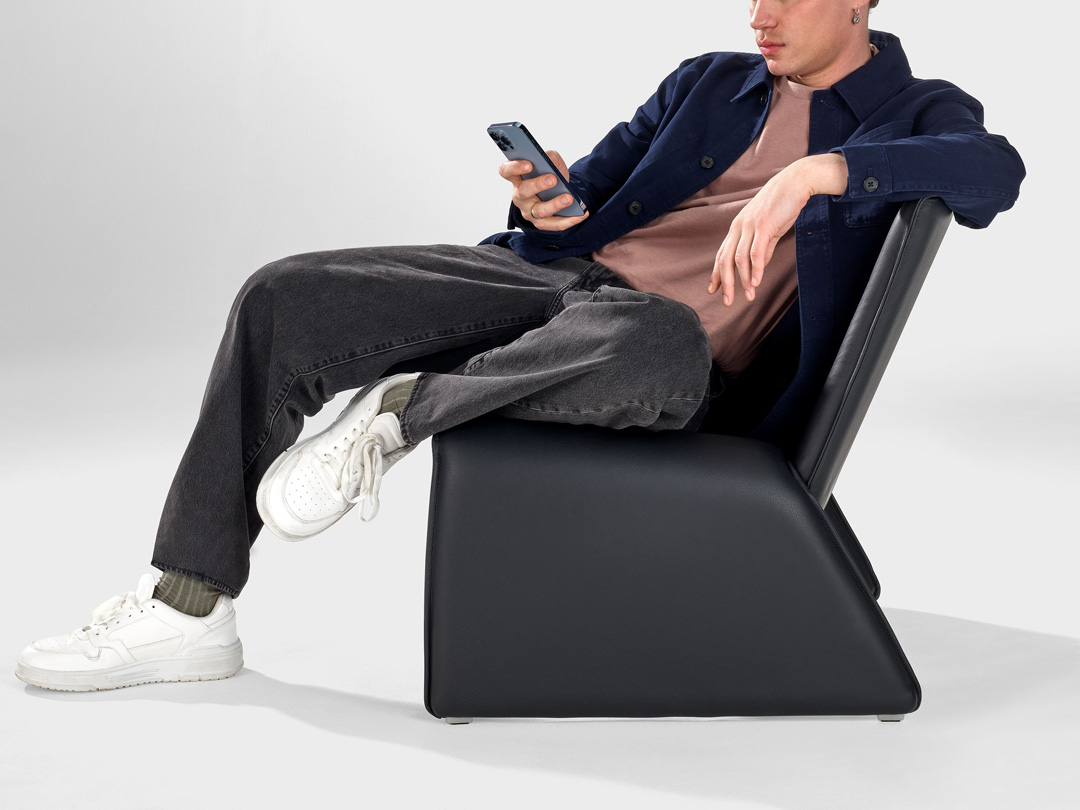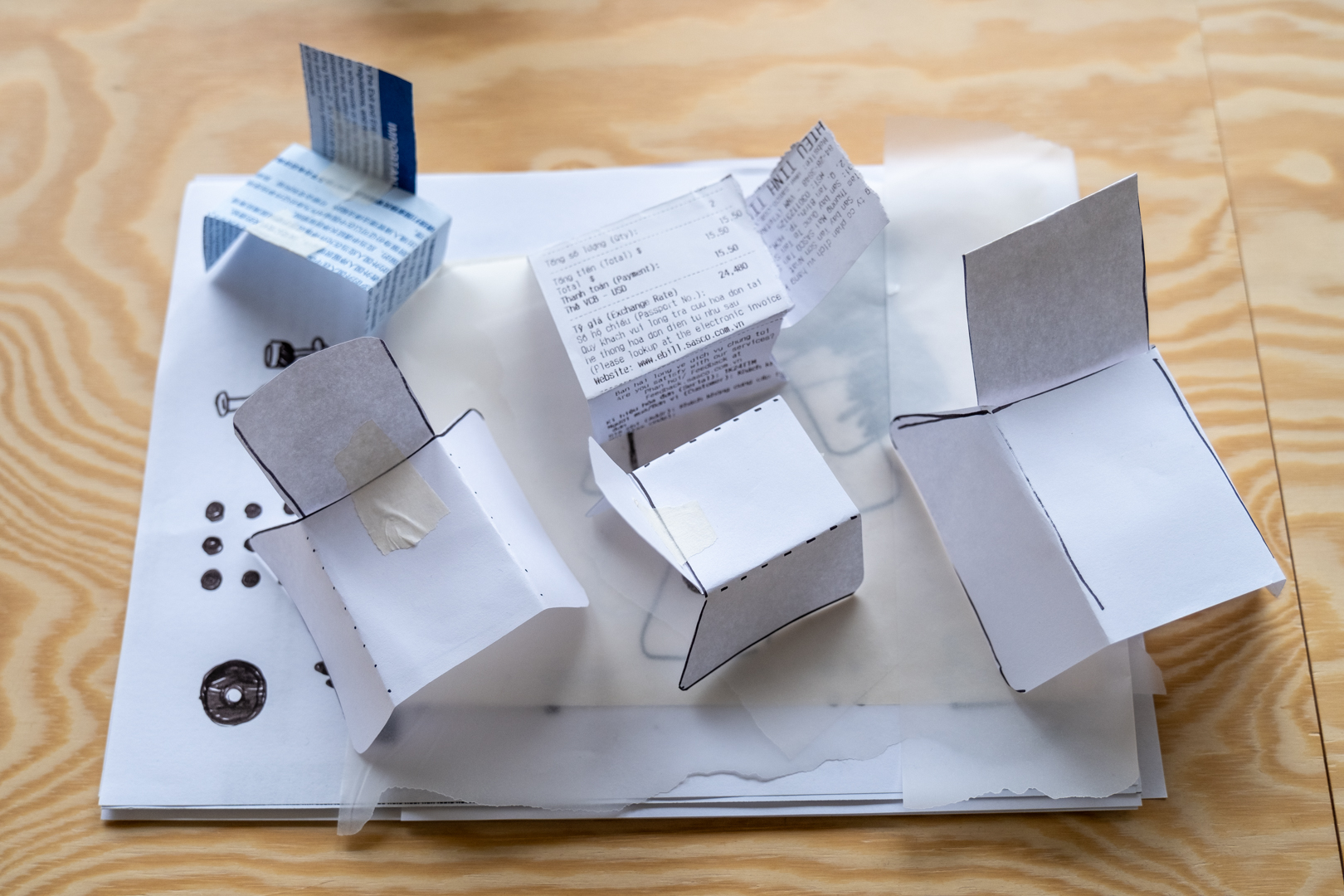With a background in graphic design and carpentry, Daniel Schofield brings a thoughtful, hands-on approach to everything he creates. For Fin, he set out to design an upholstered lounge chair with visual lightness, sculptural form and a quiet kind of character — something that feels natural to use and easy to live with.
In this Q&A, Daniel reflects on his design process, the importance of charm and how origami became the foundation for Fin’s distinctive shape.
Read on, then discover Fin here.

How did you get into design?
There was never really a plan. I knew I wanted to do something creative, so I started by studying graphic design. I loved it, but later, I felt the need to work with my hands. So I became a builder and did a carpentry apprenticeship. That hands-on experience – working on houses, schools, hospitals – taught me a lot. But over time, I got a bit tired of the repetition. Then a friend suggested I check out a furniture design course, and that’s how I ended up here. It felt like the natural blend of graphics and carpentry.
Why do you live in Copenhagen?
I moved here five years ago for a job, and now I freelance. There’s a strong design culture in Copenhagen, and it’s a great place to share ideas with like-minded creatives. Design is just more embedded in daily life here. Where do you work? I work from home in a live/work space, which I love. But I also need to get out – grab a coffee, go for a walk, or bike ride. If I stay still too long, I go a bit mad.
What inspires you?
Travel. Seeing new places and new ways of doing things always gives me a fresh perspective. Even going back to the UK now feels inspiring because I notice things I’d missed before.
What does good design mean to you?
For me, good design is simple. Simplicity tends to last, both stylistically and functionally. I think good design also has a reason – how it’s made, why it exists. But beyond the rational, there’s often something slightly unreasonable too – a little artistic touch, something charming that makes you want to keep it for a long time.
How do you define ‘charming’ in design?
It’s hard to define. Often it’s a small detail, a reference to something historic, or a subtle nod to something familiar. It’s that subconscious connection that makes a piece resonate emotionally.
What’s your design process?
It usually starts with a lot of sketching and photography – gathering thoughts and references. Then I move to CAD, paper models, scraps of wood, or quick 3D prints. It’s a back-and-forth process, constantly questioning: How will this be made? How will it ship? How will it feel in a space?

How do you know when a design is finished?
That’s tricky. During the design process, you swing between “this is great” and “this is terrible.” It’s only over time – after seeing it in different environments or watching people use it – that you really know if you got it right.
Where did the idea for Fin come from?
The idea began with exploring how to create a fully upholstered chair using plywood – a contrast to the over-moulded steel approach. I wanted to bring lightness into upholstery, so I looked at how folding paper could translate to pressing plywood. That led to the form – two overlapping pressings creating a sculptural yet minimal structure. The chair’s shape was really dictated by the process and the material, which I think gives it an honesty.
What designs inspired Fin?
There are references to classic designers from the ’60s – like Pierre Paulin, whose work was more sculptural and ergonomic. I wanted to simplify that and make something quieter, more sympathetic to its environment.
What kind of sit does Fin have?
It feels natural. Relaxing, inviting, easy. You see it, you feel comfortable, and you want to sit down without overthinking it. My favorite view is from the front three-quarter angle – where you see the line of the seat and the simple block of the backrest.

What sets Fin apart in terms of construction?
Traditional upholstery often starts with a wooden frame or moulded steel, but with Fin, I began with plywood sheets – like folding paper into structure. That allowed me to create lightness and simplicity while still achieving comfort. The stitch detail around the edge emphasizes this idea of folded lightness and gives it that extra charm.
What’s it been like working with NaughtOne?
It’s been brilliant. The team is lovely and super knowledgeable. I bring the idea, and they help bring it to life. It’s a true collaboration – especially with their deep understanding of upholstery.
What’s next for Fin?
I’m excited to see where it ends up – maybe in offices, breakout spaces, or even homes. The dream is for it to still be in use in 50 years. That would mean it did its job well.
Do you have any side projects?
Yeah – I made a book called ‘Sketches of Seating’ that pairs sketches with finished designs. You see the original idea and the final object side-by-side. It’s a way to glimpse the thinking process, which I’ve always found fascinating.
What needs redesigning?
Car parks! Total dead zones. Someone needs to rethink how we use that space.

